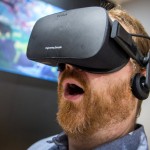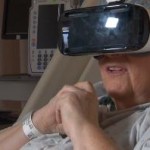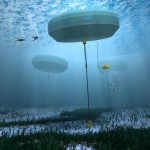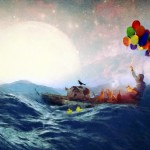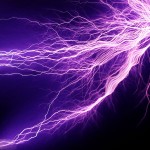Episode 1: New Zealand’s freaky AI babies, robot exoskeletons, and a virtual you.
If you’re asked to travel to New Zealand to interview people about the country’s technology scene, prepare to hear about one thing over and over again:
In the 19th century, farmers used the wire—with its .16″ diameter gauge—to build fences for sheep. The wire, though, took on far many more purposes than fencing in sheep. Farmers solved many of the pressing problems on their property by contorting and repurposing the wire. They turned it into a jack-of-all-trades material for getting work done, the duct tape of rural New Zealand.
Over the decades, No. 8 wire became a broader metaphor for the New Zealand spirit. It spoke to a people who lived far apart from the rest of the world and each other and had to be independent and resourceful. New Zealanders took to priding themselves on their ability to solve problems in unconventional, sometimes crude ways.

No. 8 wire culture is still strong. But this country of 4.5 million people has started to churn out some awfully polished, extraordinary products. These are not the things of people doing their best to get by with what they have on hand. They’re world-class technological achievements—the work of a well-educated, creative people bent on competing on the world stage. Improvisation has given way to a much more methodical, ambitious form of invention.
This episode of Hello World offers a window into just how good New Zealand technology has become. My journey covers much of the country’s North Island, stretching from Auckland to the southern port and capital of Wellington. There’s a road trip in between; if you’re going to New Zealand just to see people in labs and office parks, you’re missing out on one of the most beautiful countries on the planet. Mountains, beaches, deserts, grassy hills, rainforests—it’s all there.
As for the technology, well, bless the New Zealanders and their willingness to go after seemingly daft—some would argue impossible—ideas. Just in Auckland, there’s a professor namedMark Sagar who has built the world’s most realistic computer-generated faces, making them think and talk, too. There’s Rex Bionics, which has made exoskeletons that let paralyzed people walk again. There’s a gentleman named Ray Avery, who wears all-white and creates low-cost baby incubators and protein formulas for the malnourished from his garage lab. And there’s Rocket Lab—an honest-to-God rocket company that is on the verge of lowering the cost of sending things to space by the most dramatic margin in history. It tests these rockets near a farm on the outskirts of Auckland, and the cows and sheep barely seem to mind.
The technological action in Wellington impresses as much, although it comes with a much different bent. This is the home of Peter Jackson’s moviemaking empire, and it’s an incredible hotbed of effects artistry in two, three, and four dimensions.
When Jackson started the Lord of the Rings project, most people figured he would do the movies and then Wellington would more or less go back to its roots as the center of the country’s government. But Jackson has hopped from one grand project to the next, building a moviemaking industry that continues to attract work and talent from overseas. There are film sets, supercomputers for special effects, and enormous virtual reality studios. And if you happen to be the host of a technology travel show, you get to play with all the toys, including Jackson’s bespoke camera.

Jackson started Weta Digital, which has morphed from a pure film operation to a quasi-tech startup. They’re building some groundbreaking software for manipulating images, and this might turn into a stand-alone virtual reality technology company.
Talent from Weta and from Jackson’s other companies have gone on to start companies, too, usually in the technology field. There’s8i, for example, which uses dozens of standard cameras to capture a 360-degree video of a person and turn it into a virtual reality character. These are early days for the technology, but its implications are profound. If someone is willing to have all those cameras, a few computer geeks, and a green screen in a hospital room, the birth of a child can be captured and forever relived, just by donning a face computer. My wife and I missed our opportunity to share that experience, but—thanks to a visit with 8i—I now have a version of my 38-year-old self to talk to when I’m lonely.
There’s a sense of urgency behind all of this technological activity. New Zealand’s economy depends so much on agriculture and tourism. It’s clear that New Zealand has moved well beyond the days of No. 8 wire-tinkerers making microwaves in their workshops out of fencing and discarded toothpaste tubes. The country seems determined to dazzle outsiders with well-made, very clever technology.


